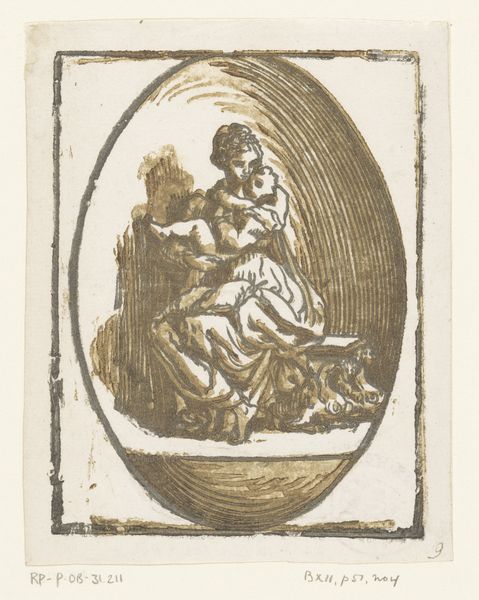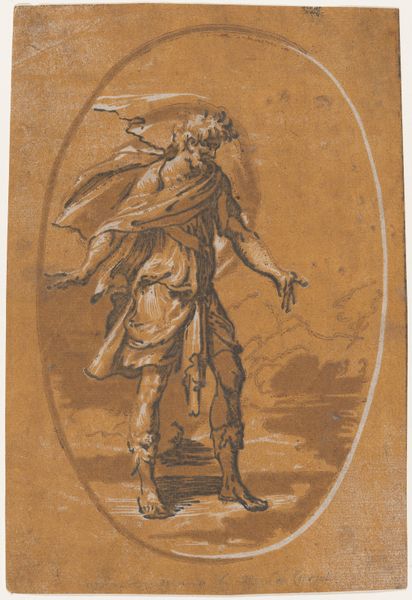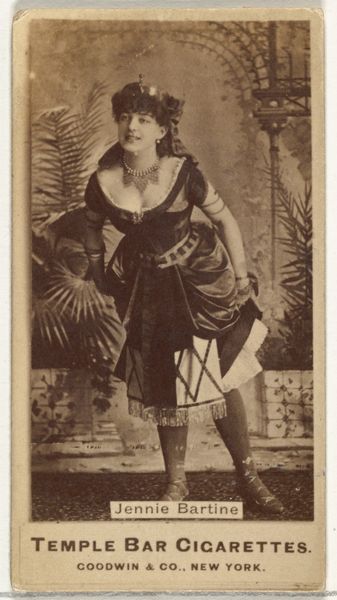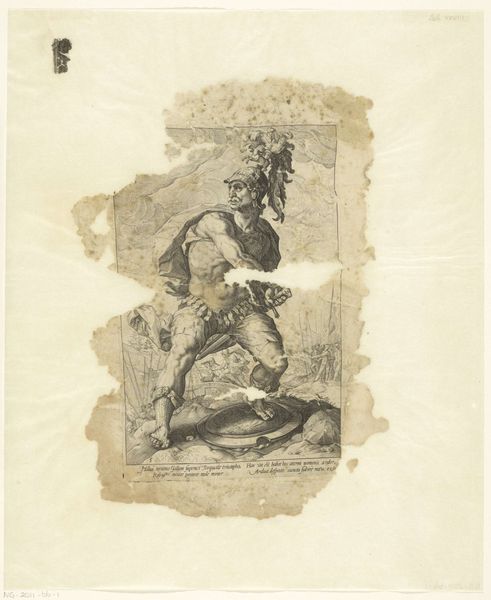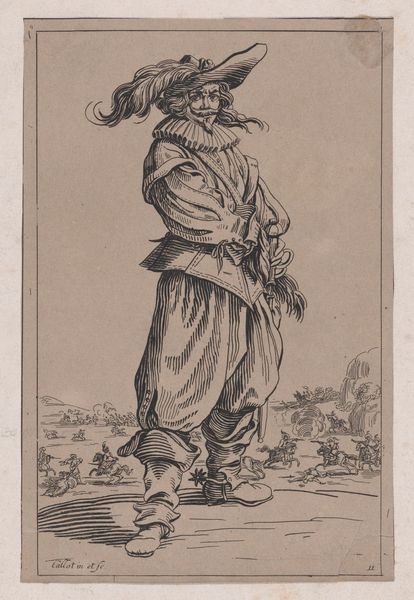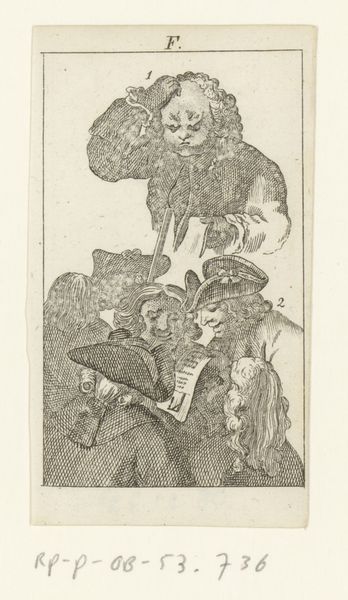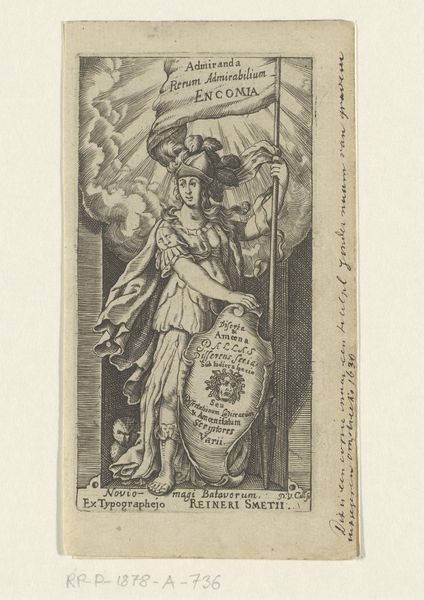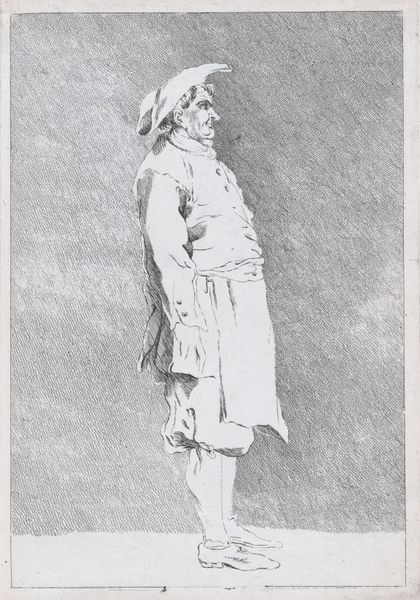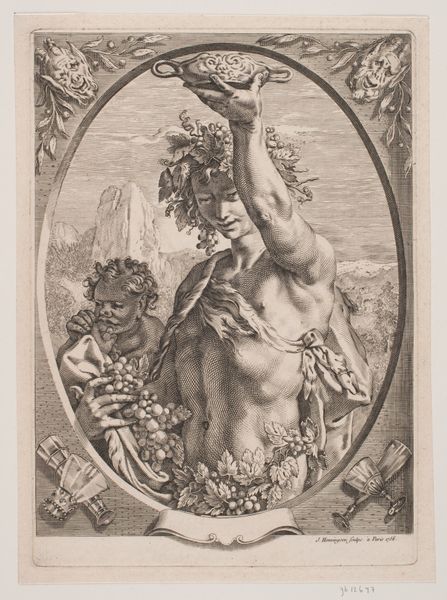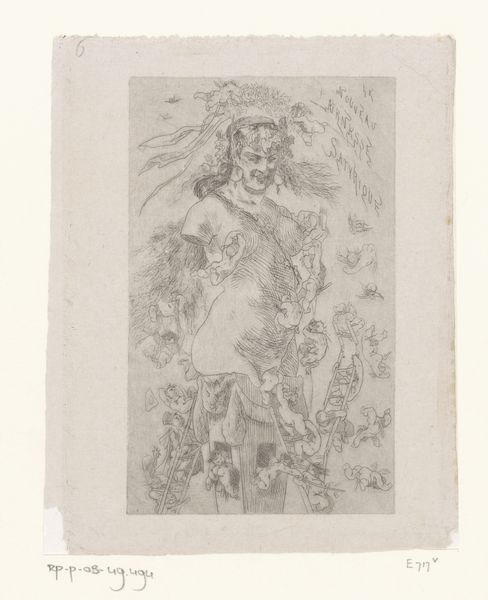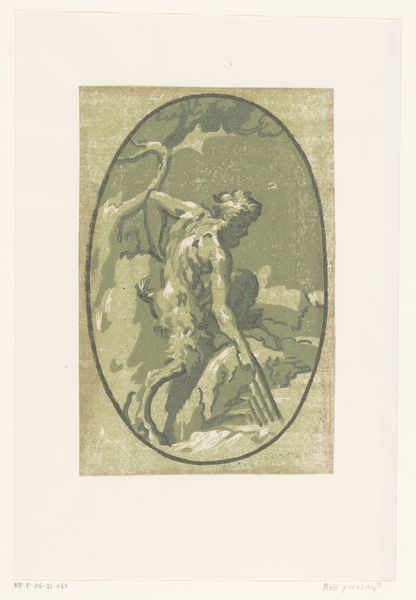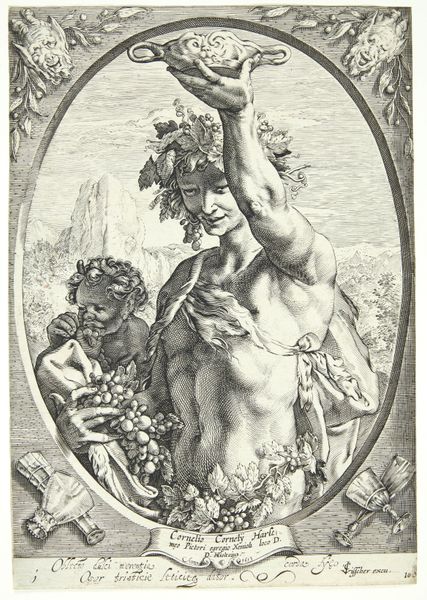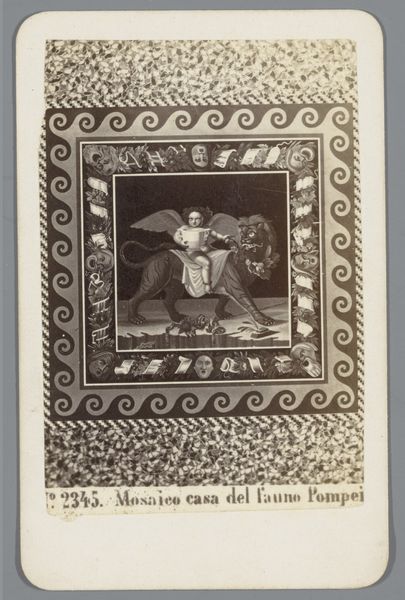
Caricatured Chilean figure, 1 Escudo, from the series Coins of All Nations (N72, variation 2) for Duke brand cigarettes 1889
0:00
0:00
Dimensions: Sheet: 2 3/4 x 1 1/2 in. (7 x 3.8 cm)
Copyright: Public Domain
Curator: What a peculiar piece! At first glance, I'm struck by its almost grotesque nature. Editor: Indeed. We’re looking at “Caricatured Chilean Figure, 1 Escudo, from the series Coins of All Nations (N72, variation 2) for Duke brand cigarettes.” It's dated 1889 and the profile is credited to W. Duke, Sons & Co. These cards were essentially advertisements packaged with cigarettes, a common practice back then. Curator: Packaged with cigarettes? That's fascinating! The ephemerality of it clashes sharply with the quite vivid and almost garish coloring. It appears to be printed, maybe even colored pencil was applied. A study in contrasts! It's a material object promoting another, highly consumable material. Editor: Exactly. The means of production here tell us much about consumer culture and marketing strategies of the time. And look closer at this…character! The clear "orientalism" styling is an indicator of socio-political leanings on global trade with countries outside the US. This was about shaping perceptions, national identity, and consumer choices. Curator: And not necessarily flattering perceptions, it appears! The figure is definitely an exaggerated and, dare I say, unflattering caricature. But where does this style come from? What traditions? Is it emulating some form of "naive art"? Editor: There’s definitely a leaning into Ukiyo-e influences. Though twisted, mangled perhaps to project Western biases and political agendas onto another nation’s symbol – hence the Chilean coin placed in the front, its value stated just below, like a trophy or asset that can be had. The institution, and the cigarette company, plays with ideas of global currency, which would surely play into how people conceptualized global economies. Curator: So this is an object promoting global capital that actively works by denigrating other countries. That puts the focus of material analysis squarely in an uncomfortable political field. So a colorful caricature it might appear to be on the surface, but a product of distinct colonial attitudes towards labor, resources, and how these enter consumer economies. Editor: Absolutely. These little cards were powerful tools. Analyzing this, especially as it resides in a place like the Met, highlights the importance of unpacking the narratives embedded within seemingly innocuous everyday objects, and the lasting effect those impressions leave on national imaginations.
Comments
No comments
Be the first to comment and join the conversation on the ultimate creative platform.
